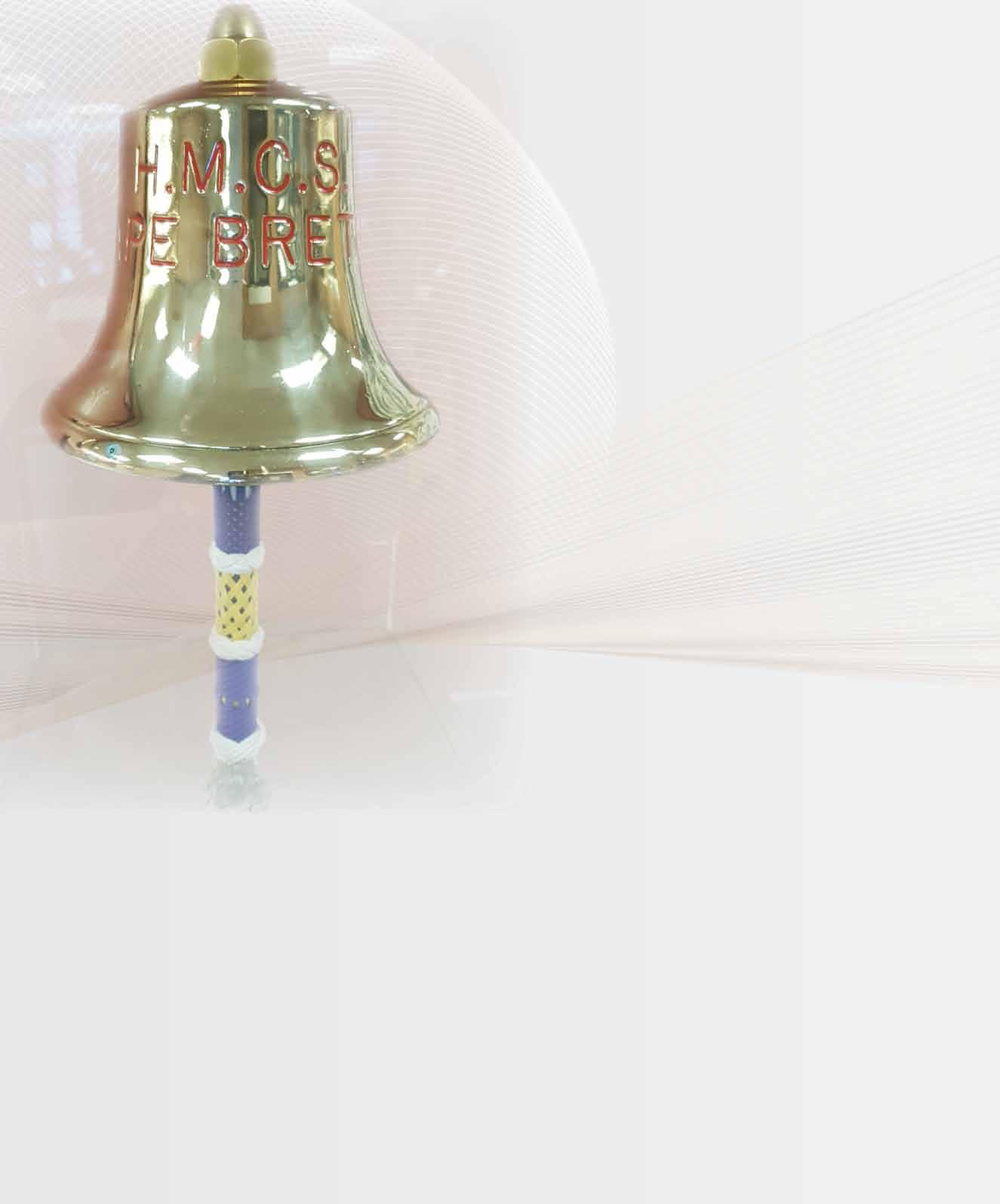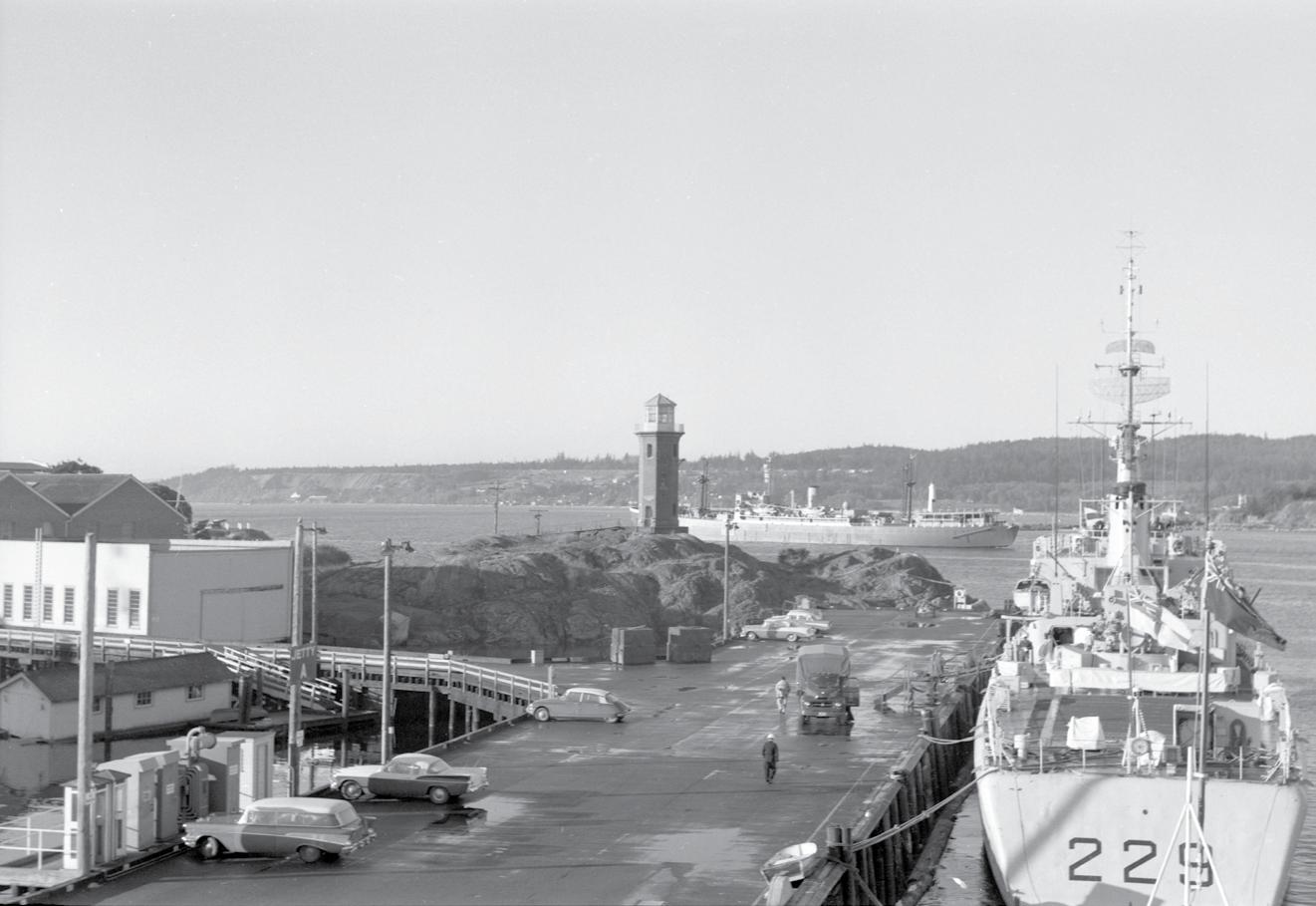
1 minute read
FROM SEA TO STATION: A HISTORY OF FMFCB AND HMCS CAPE BRETON

From Sea to Station
Advertisement
History of HMCS Cape Breton Bell
Written by Andrea Kyfiuk
In the foyer of D250 – FMFCB’s main building – there is gleaming brass bell encased in a glass case for all to see. Etched into the bell’s waist are the letters HMCS Cape Breton, highlighted with red paint.
HMCS Cape Breton.
This is the ship repair facility’s namesake, a warship with a rich history and strong ties to the west coast. The display serves as recognition of a navy from yesteryear and a nod to bygone days of ship repair in HMC Dockyard. It is one of the few relics that remain from the ship before it was deliberately sunk Oct. 20, 2001, off Snake Island, near Nanaimo by the Artificial Reef Society of British Columbia.
HMCS Cape Breton (100), the second warship to bear this name, was built in Vancouver and first sailed as HMS Flamborough Head under the British flag during the end of the Second World War. The Royal Canadian Navy acquired it in 1952 and renamed it Cape Breton upon commissioning the next year. It served as a repair ship and training establishment for technical apprentices on the east coast for five years. A year later, it was converted into an escort maintenance ship at Esquimalt dockyard until it was paid off in 1964.
Service life did not end there. It continued to function as a towed mobile support facility and accommodation vessel - Fleet Maintenance Group (Pacific) - until it was replaced by a brickand-mortar shore building in 1993, known as the Ship Repair Unit Pacific (SRUP).
The ship was acquired by the Reef Society and prepared for its new life as an artificial reef. The stern section and triple expansion engine were removed and returned to their birthplace – Burrard Dry Dock in North Vancouver. The bell was given to the CFB Esquimalt Navy and Military Museum for safekeeping until FMFCB’s shop consolidation project was complete.
HMCs Cape Breton sails out to sea, circa 1962. Photo courtesy Charlie Dobie, www.rcnhistory.org










